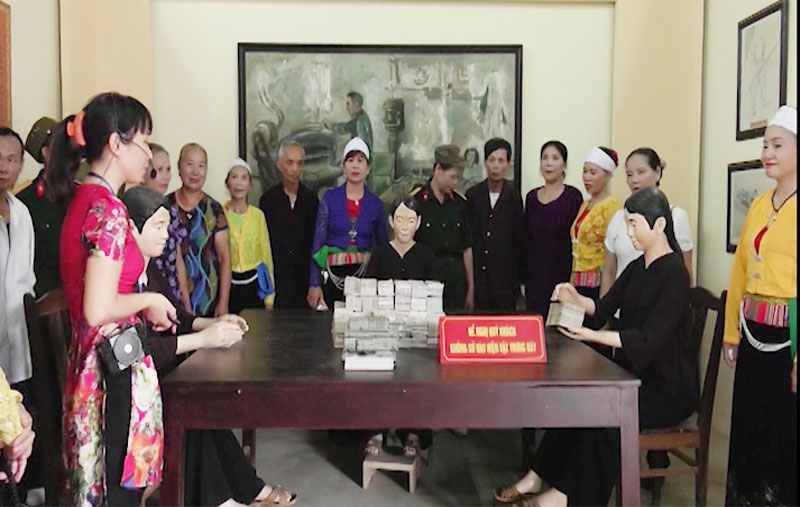
(HBO) - Tourism is considered as one of the advantageous economic sector in Lac Thuy district, especially spiritual tourism. This is also considered as one of the key economic sectors that bring great revenue to the local budget. However, in order to exploit this advantage, the district has faced with some difficulties, especially in terms of infrastructure. Therefore, the priority of improving this issue is being paid attention by Lac Thuy district.

The Printing Factory Relic Area, Co Nghia
commune (Lac Thuy) attracts many tourists inside and outside the province to
visit.
According to
statistics, Lac Thuy district currently has 85 relics, in which six relics have
been classified as the national relics by the Ministry of Culture and
Information, 11 relics are at provincial level and 29 relics need to be
protected. This is the basis for Lac Thuy district to develop tourism, in which
spiritual tourism is one of the strengths of the locality.
Identifying that tourism and services are important economic
sectors in the economic structure of the district, every year, the district promotes propaganda in
many forms and on the mass media about the country and people of Lac Thuy district. Especially, the sites of
sightseeing, scenery and cultural history of Tien pagoda, Phu Lao commune, the historic revolutionary
siteof the first revolutionary site of the first revolutionary printing house in Co
Nghia commune with the
international and domestic visitors, all of which make the
highlight of tourism activities, attracting many visitors to visit.
However, tourism in the
district has not developed adequately with the potential as well as available advantage. The revenue as well as the
number of visitors visiting in the early months of 2018 decreased 10% over the same period in 2017. This is
partly due to the fact that local tourism activities are mainly spontaneous; the connections amongroutes and tourist destinations are not effective; the tourism promotion and investment is not much, the State management of
tourism has not really been thorough and has not created the typical tourism products of the locality.
Located just a 20-minute drive from Hoa Binh City, Ora Hill Farmstay & Glamping Hoa Binh is a captivating new destination nestled in Mo hamlet, Bình Thanh commune, Cao Phong district. Combining farming with leisure, this tranquil retreat is perfect for those seeking balance, joy, and an immersive experience in the expansive beauty of nature.
Muong Bi - Tan Lac is renowned as one of the four famous Muong regions in Hoa Binh province. Blessed by nature with a favourable climate and stunning landscapes, Tan Lac holds great advantages for tourism development. The local tourism industry has made remarkable strides in recent times thanks to the attention and support from the local authorities and sectors.
With its strategic location, well-developed transport network, and diverse soil and climatic conditions, Hoa Binh is emerging as a must-visit destination in Vietnam's northwestern tourism corridor. The province boasts numerous attractions, including the Kim Boi hot springs (Kim Boi district), the Dau Rong cave complex (Cao Phong), the Mai Chau valley (Mai Chau), and the iconic Hoa Binh hydropower plant.
The northern mountainous province of Hoa Binh has been listed among the 71 most beautiful places to visit worldwide by the prestigious US travel magazine Condé Nast Traveller.
Hoa Binh province’s rich natural and cultural resources position it as a prime location for developing community-based tourism (CBT). In recent years, support from central and provincial policies, as well as assistance from non-governmental organisations, have encouraged local ethnic minority and mountainous communities to actively engage in the sector.



